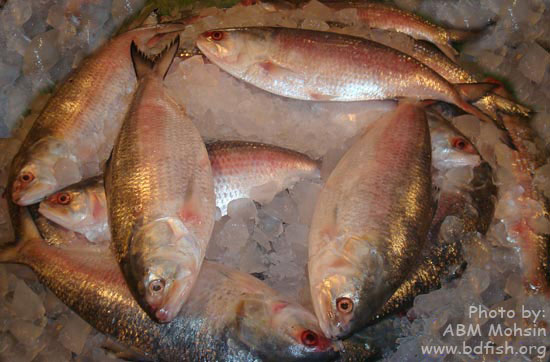Synonyms: Chanda nama: Hamilton, 1822; Rahman, 1974; Bhuiyan, 1964. Ambasssis nama: Day, 1878; Day, 1889; Ahmad, N. 1943; Shaw and Shebbeare, 1937. Common name: Elongate glass-perchlet (English name). Bangla name: Chanda, Nama chanda. Taxonomic position:
Least Concern (LC) Freshwater Fishes of Bangladesh

A Least Concern (LC) species is one which has been categorized by the International Union for Conservation of Nature (IUCN) as likely lowest risk, widespread, abundant taxon and does not qualify for a more at-risk category. According to IUCN Bangladesh
List of Freshwater Fishes of Bangladesh and their conservation status
List of freshwater fishes of Bangladesh including their local conservation status (IUCN 2015a and b) are given below. In the list, name of fishes has been arranged alphabetically. The latest local conservation status of listed fishes is mentioned here according
Fin Fishes of the River Choto Jamuna
River Choto Jamuna is an important and well-known river in Northern Bangladesh and one of the major distributaries of the River Atrai. This river contributes much in terms of fish production and source of income for many fishermen living beside
Past and Present Status, and Prospects of Ornamental Fishes in Bangladesh
Bangladesh is a land of river and she has a diverse fisheries resources. There are 260 freshwater species, 475 marine water species, 24 fresh water prawn species, 36 marine shrimp species and crab, snail, mussel, turtle, etc. in our water
Photofeature: Freshwater Fishes of Sunamganj Haor Area (Part-C)
Catla catla (Hamilton, 1822) English Name: Catla Bengali Name: Catla (কাতলা), Katol (কাতল) IUCN (Bangladesh) Status: Not threatened Chaca chaca (Hamilton, 1822) English Name: Squarehead catfish, Angler catfish Bengali Name: Chaka (চাকা), Cheka (চেকা), Chaga (চেগা), Beng-sabbh (বেংসাব), Gangania (গ্যানগেনিয়া)
Fishes of the River Halda
Bangladesh is a riverine country and more than 700 rivers are present in this country (BFRI, 2007). In ancient time river was the main source of fishes from where people consume and mitigate their demand. Fishes bred and live in
